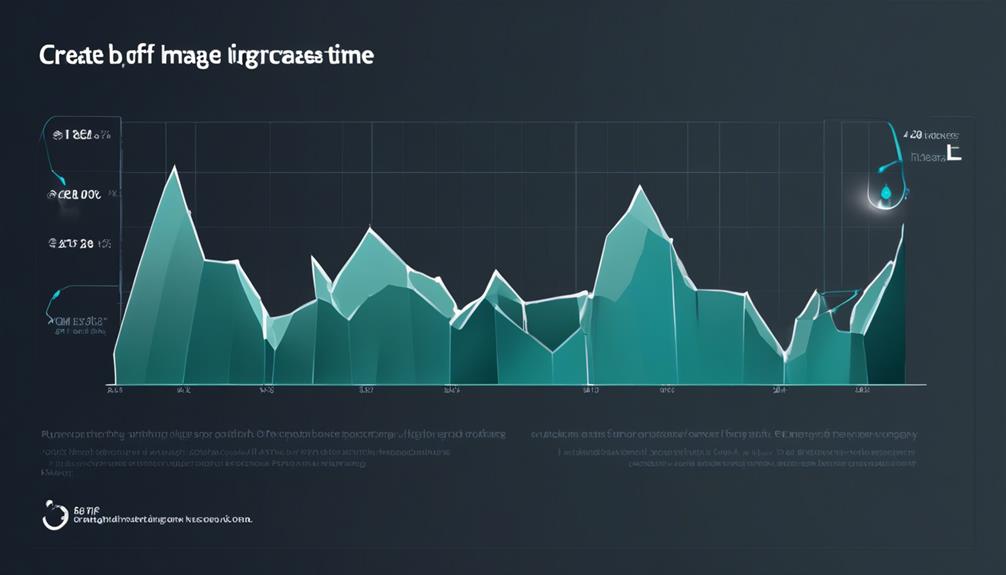We’ve all gone through the demoralizing experience of devoting our energy and passion into creating the ultimate email campaign, only to see it vanish into the endless abyss of unread messages.
It's frustrating, isn't it? But fear not, there's a solution within reach. We're about to uncover the subtle art of capturing your audience's attention, from crafting compelling subject lines to leveraging the power of visuals.
Stay with us to unlock the secrets of email engagement and finally crack the code to getting your campaigns opened.
Key Takeaways
- Personalized and relevant content is crucial for increasing email open rates.
- Understanding email filtering techniques and maintaining a positive sender reputation improve email deliverability.
- Utilizing behavioral triggers and automated emails based on recipient actions drive engagement.
- Timing emails to align with audience preferences and utilizing visuals can boost open rates.
The Importance of Compelling Subject Lines
Crafting compelling subject lines is a key component of successful email campaigns. They play a crucial role in capturing the recipient's attention and driving open rates. The importance of compelling subject lines can't be overstated. They serve as the first point of contact with your audience, influencing their decision to open or ignore your email.
A compelling subject line can pique curiosity, create a sense of urgency, or offer value. This prompts recipients to engage with the content inside. In the fast-paced world of email communication, where inboxes are inundated with messages, a well-crafted subject line can make the difference between being noticed or overlooked.
In the realm of email campaigns, the significance of compelling subject lines becomes even more apparent. They serve as the gateway to your message, determining whether it gets the attention it deserves or languishes in the depths of the recipient's inbox.
Crafting Persuasive "From" Names
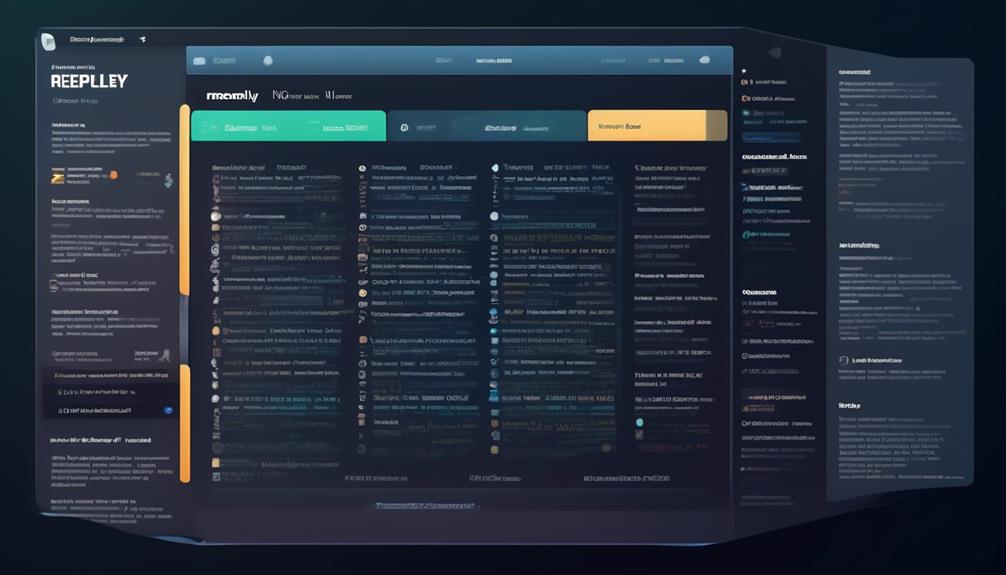
Enhancing recipient trust and connection can be achieved by using a recognizable name or relevant company department in the 'From' name of your email campaigns. Crafting persuasive 'From' names is crucial for improving email open rates.
A personalized 'From' address, such as an employee's name, adds a human touch and balances personalization with branding. It's essential to create a 'From' name that reflects the sender's identity or relevant department to differentiate your emails from generic or corporate ones. Moreover, sender familiarity is vital, particularly on mobile devices where the 'From' address is more prominent.
However, caution should be exercised when using a person's name as the sender if recipients haven't interacted with them to prevent confusion and alienating opt-ins.
Understanding Audience Segmentation
After establishing a persuasive 'From' name to enhance recipient trust and connection in our email campaigns, understanding audience segmentation becomes crucial for tailoring content to specific groups with different needs and interests.
Segmentation is essential for an effective email marketing strategy. Here's why it matters:
- Higher Engagement: Segmentation leads to higher engagement and better overall email performance by sending relevant content to specific groups.
- Relevancy: Utilizing customer information allows for better content relevancy, understanding, and providing relevant information to different segments.
- Increased Open Rates: Sending emails to a targeted audience based on interests, demographics, and past purchase history increases open rates.
- Personalization: Gradually collecting customer information through user actions and segmenting lists based on customer groups enables personalized and targeted content.
- Better Targeting: Segmentation enables the creation of tailored content, ensuring that the right message reaches the right audience at the right time.
Understanding audience segmentation is pivotal in ensuring that our marketing campaigns resonate with our audience and drive the desired actions, ultimately leading to improved open rates and campaign success.
Optimizing Email Content for Engagement

Optimizing email content for engagement involves strategically tailoring the message to captivate recipients and prompt action, ensuring that each element contributes to a compelling and impactful communication. When it comes to crafting engaging emails, the subject line plays a pivotal role in capturing the recipient's attention. By keeping subject lines short, specific, and personalized with the recipient's name, while avoiding salesy language, marketers can increase the likelihood of their emails being opened. Additionally, personalizing the From address using an employee's name can create a more personal connection with recipients, ultimately enhancing open rates. Timing is another critical factor in email marketing. Testing different times and sending emails later in the week can lead to better results, as open rates can vary based on the time and day of the week. Furthermore, over-mailing can lead to fatigue and low open rates, emphasizing the importance of finding a balance in email frequency. Lastly, segmenting email lists to send targeted and personalized content can significantly improve engagement and overall email performance.
| Email Optimization Strategies | Benefits |
|---|---|
| Enticing Subject Lines | Higher Open Rates |
| Personalized From Address | Improved Engagement |
| Strategic Timing | Increased Open Rates |
| Optimal Email Frequency | Avoiding Fatigue |
| Segmented Email Lists | Enhanced Performance |
Leveraging Personalization in Email Campaigns
Hey there!
Let's talk about the power of personalization in email campaigns.
Customized subject lines and dynamic content insertion are essential tools for capturing recipients' attention and making them feel valued.
Customized Subject Lines
Utilizing customized subject lines in email campaigns enhances engagement and encourages recipients to open and interact with your content. By personalizing subject lines with the recipient's name, you can create a more engaging opener. Making subject lines specific and unique to your business catches the recipient's attention.
It's important to avoid using words that trigger spam filters or come across as too salesy. Leveraging preview text gives recipients a glimpse of what to expect in the email, increasing the likelihood of them opening it. Furthermore, utilizing subject line personalization creates a more personal connection with recipients, leading to higher open rates and ultimately contributing to a successful email campaign.
Customized subject lines are a powerful tool to open your emails and achieve higher open rates.
Dynamic Content Insertion
Leveraging dynamic content insertion in email campaigns allows for personalized and targeted communication based on recipient data, enhancing engagement and open rates. By utilizing recipient data such as name, location, or past interactions, email content can be personalized to create a more relevant and valuable experience for the recipients.
Implementing personalized product recommendations, tailored messaging, and customized calls to action based on recipient data can significantly improve open rates and overall campaign performance. Dynamic content insertion also enables the display of different images or messages based on recipient segments or preferences, further enhancing the relevance and impact of the email content.
This level of personalization can lead to higher engagement as recipients are more likely to interact with and find value in the content they receive.
A/B Testing for Improved Open Rates
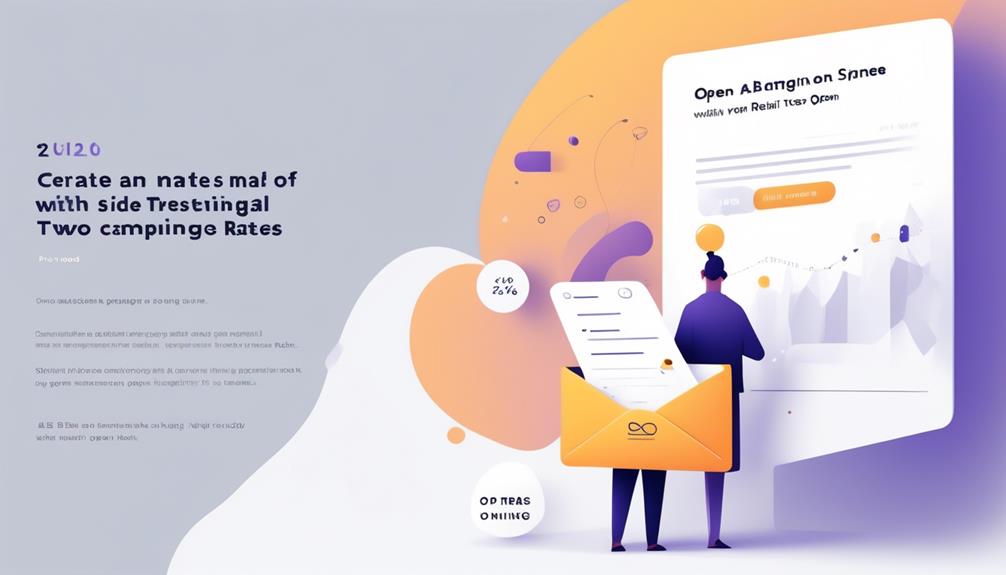
When conducting A/B testing for improved open rates in email campaigns, we analyze various factors to determine the most effective strategies for engaging our audience.
To increase open rates, we carefully test different subject lines to gauge their impact on opening your emails.
Experimenting with personalized and generic From addresses can also provide insights into what resonates with recipients, ultimately increasing open rates.
Utilizing A/B testing enables us to pinpoint the optimal timing for sending emails to people, ensuring they're more likely to be opened.
Additionally, testing different email frequencies allows us to understand how often our subscribers want to receive content, thus maximizing open rates.
Lastly, segmenting our email list and personalizing the content can have a significant impact on increasing open rates, as recipients are more likely to engage with content that's relevant to them.
Mobile-Friendly Email Designs
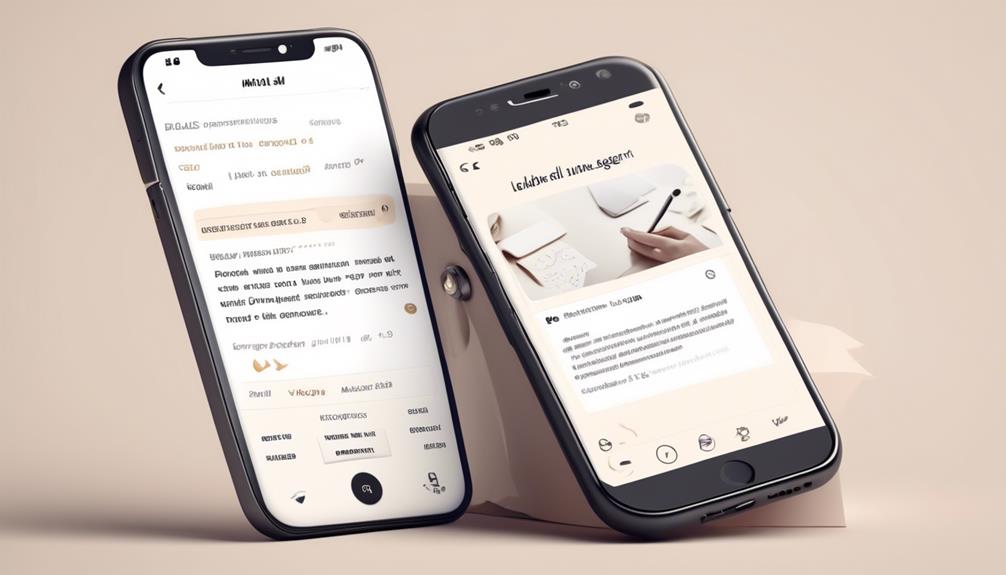
In today's digital landscape, ensuring that your email designs are mobile-friendly is crucial for engaging with a diverse audience across various devices. With approximately half of customers opening emails on smartphones, the significance of mobile optimization can't be overstated. Non-mobile optimized emails can result in a poor user experience, including distorted appearance and readability issues. Frustrated recipients are likely to delete or ignore emails that aren't optimized for mobile devices, impacting the success of your email campaigns.
According to HubSpot, 46% of all emails are opened on mobile devices, underscoring the importance of mobile-friendly email designs.
To address this, it's vital to use responsive designs that adapt to different screen sizes, ensuring clear formatting and readability across devices. Incorporating mobile-friendly practices into your email campaigns can significantly improve open rates and engagement.
Enhancing Email Deliverability
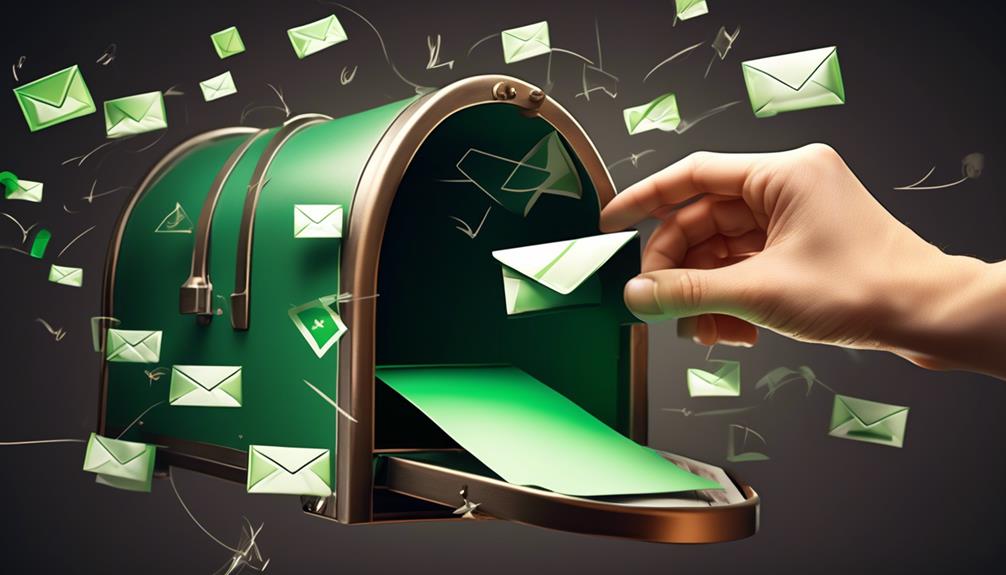
Improving email deliverability is crucial for ensuring that our messages reach the intended recipients' inboxes. Understanding email filtering techniques and how to avoid triggering spam filters is essential for increasing the chances of our emails being seen.
Additionally, maintaining a positive sender reputation through consistent, relevant, and engaging content can significantly impact the deliverability of our email campaigns.
Email Filtering Techniques
To enhance email deliverability and improve open rates, implementing effective email filtering techniques is crucial for ensuring that your messages reach the intended recipients' inboxes. When it comes to email filtering techniques, consider the following:
- Crafting compelling and specific subject lines to avoid spam filters and entice recipients.
- Personalizing the From address to create a more personal connection and increase sender familiarity.
- Testing different sending times to find the optimal time for improved open rates.
- Avoiding over-mailing your list to prevent fatigue and low open rates, while adjusting frequency based on subscriber relationship.
- Implementing effective email list segmentation to send relevant content and improve overall email performance.
Improving Sender Reputation
Enhancing our sender reputation is essential for maximizing email deliverability and increasing open rates. By utilizing compelling subject lines and avoiding salesy language, we can capture recipients' attention and improve our sender reputation.
Personalizing the From address establishes a connection with recipients, enhancing familiarity and distinguishing our emails from generic corporate ones.
Timing also plays a crucial role in email marketing success, so testing and sending emails at optimal times can significantly impact open rates and overall performance.
Additionally, managing email frequency and implementing effective list segmentation are vital for maintaining engagement and avoiding fatigue.
These strategies not only enhance our sender reputation but also result in higher engagement and improved overall email performance, ultimately leading to increased open rates for our email campaigns.
Utilizing Behavioral Triggers
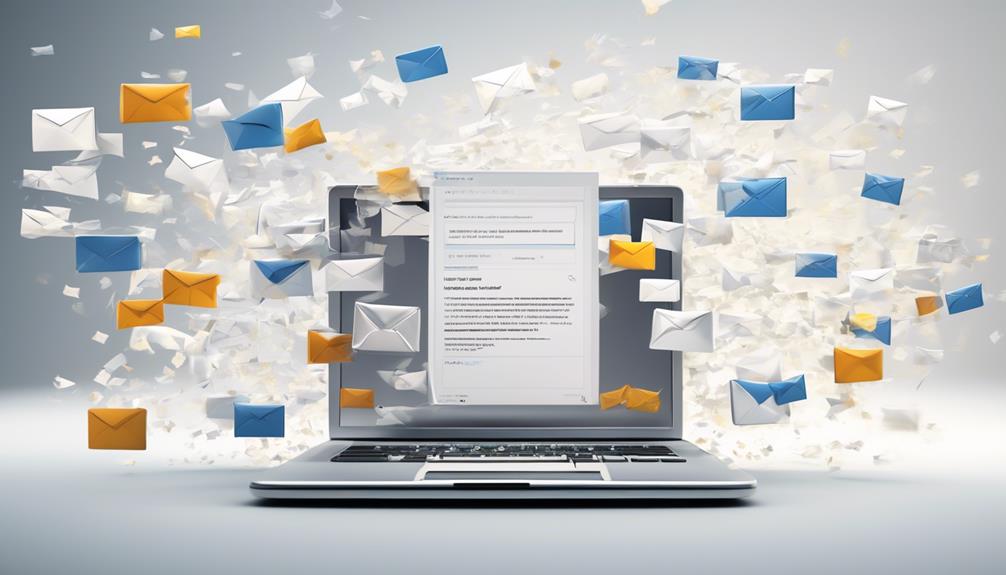
How can we leverage behavioral triggers to create personalized and engaging email campaigns that align with recipient actions and interactions with our brand?
Utilizing behavioral triggers is crucial in optimizing email campaigns to resonate with recipients and drive engagement. Here's how we can effectively utilize behavioral triggers:
- Tailor content based on specific behaviors, such as website visits or past purchases.
- Implement automated emails triggered by actions like abandoned carts or post-purchase follow-ups.
- Leverage behavioral data to create targeted segments for more relevant campaigns.
- Analyze recipient behavior to understand preferences and optimize future email content.
- Ensure that our sales pitch aligns with the recipient's actions and interactions.
Addressing Frequency and Timing

Addressing the frequency and timing of email campaigns plays a pivotal role in maximizing open rates and maintaining audience engagement.
When considering the best timing for email campaigns, it's crucial to align with your audience's active inbox-checking hours and preferences. Testing different sending times can help find the optimal time to reach your specific audience and maximize open rates.
According to data, opens tend to increase after 12 pm, with the highest rates between 2 and 5 pm. It's important to avoid bombarding your audience with excessive emails, as this can lead to fatigue and unsubscribes. Finding the right balance in email frequency is key.
Monitoring audience response patterns and providing consistent value can help achieve this balance. Understanding that people have different schedules and preferences, we must respect their time to read emails.
Harnessing the Power of Visuals

When it comes to email campaigns, visuals play a crucial role in capturing the attention of recipients. Incorporating eye-catching images, infographics, and videos can make your emails more engaging and boost open rates.
Additionally, the use of visual storytelling and branded visuals can create a lasting impact and enhance brand recognition.
Visual Content Impact
To effectively boost email open rates, harnessing the power of visuals through eye-catching images, videos, and infographics is essential. Visual content impact plays a crucial role in capturing the attention of recipients and compelling them to engage with your emails.
Here's why visual content has a significant impact on email opening:
- Captures attention: Visually appealing content stands out in crowded inboxes.
- Increases engagement: Images and videos make the content more engaging and shareable.
- Builds brand identity: Branded visuals create a consistent and memorable visual identity for your email campaigns.
- Conveys information effectively: Visual content can convey complex information more effectively than plain text.
- Evokes emotions: Visual storytelling can evoke emotions and create a deeper connection with the recipients.
Image Selection Tips
In harnessing the power of visuals for email campaigns, the selection of high-quality and relevant images is paramount to capturing attention and evoking emotion, ultimately encouraging recipient engagement.
When sending out email campaigns, it's crucial to invest time in choosing images that align with your brand and message. High-quality visuals not only make your emails visually appealing but also contribute to making them more memorable for the recipients.
By incorporating images that resonate with your target audience, you can increase the likelihood of your emails being opened. Additionally, testing different types of images can provide valuable insights into which ones generate the most positive response from your email recipients.
Ultimately, the careful selection of images plays a pivotal role in the success of your email campaigns.
Monitoring and Analyzing Engagement Metrics
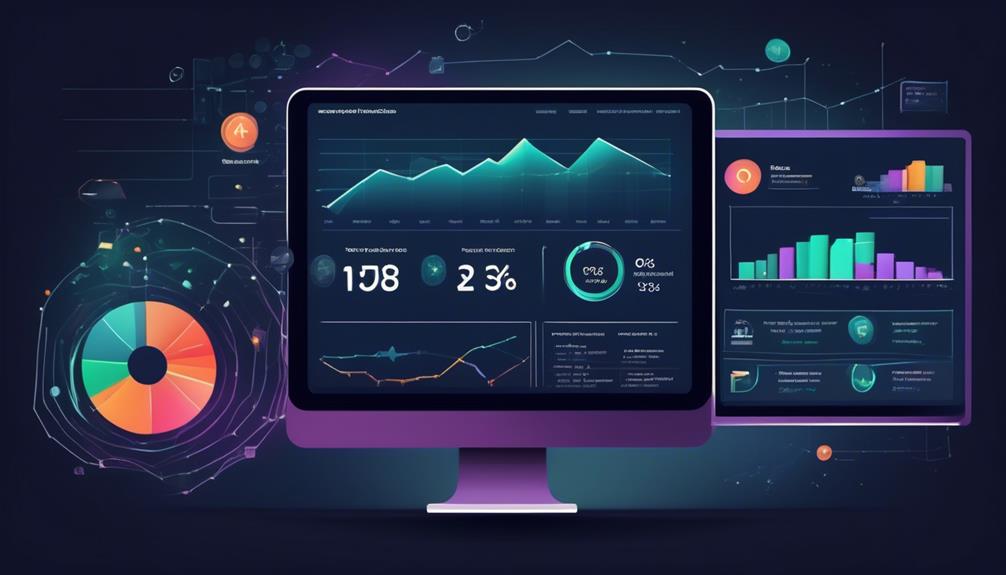
Analyzing engagement metrics provides valuable insights into our audience's behavior and allows us to optimize our email campaigns for better performance. By monitoring and analyzing these metrics, we gain a deeper understanding of how our audience interacts with our email content, enabling us to make data-driven decisions for improvement.
Here are five key reasons why monitoring and analyzing engagement metrics is crucial for the success of our email campaigns:
- Assess campaign performance: By tracking open rates, click-through rates, and conversion rates, we can evaluate the effectiveness of our email campaigns.
- Understand audience behavior: Analyzing engagement metrics helps us identify trends and understand how our audience interacts with our content, allowing for more targeted and personalized communication.
- Identify underperforming campaigns: Monitoring engagement metrics enables us to pinpoint campaigns that aren't meeting expectations, prompting us to implement strategic improvements.
- Measure impact over time: Tracking engagement metrics over time allows us to assess the impact of changes made to our email campaigns and identify patterns in audience response.
- Refine strategies through A/B testing: Utilizing engagement metrics, we can conduct A/B tests to refine various elements of our email campaigns, leading to improved engagement and higher open rates.
Implementing Feedback Loops for Improvement

As we examine our email campaign's engagement metrics, it becomes evident that implementing feedback loops for improvement is essential to enhancing our overall performance and recipient satisfaction. Feedback loops allow us to gather valuable insights into the effectiveness of our email campaigns.
By analyzing open rates, click-through rates, and unsubscribe rates, we can understand recipient behavior and preferences. A key strategy is to utilize A/B testing to experiment with different subject lines, content, and send times, enabling us to identify the most impactful approaches.
Encouraging recipients to provide feedback through surveys or direct responses is another valuable method for gathering insights.
The feedback obtained from these loops is instrumental in refining our email content, frequency, and targeting to improve open rates. It enables us to address any issues that may be hindering our campaigns from being opened and read.
Embracing Innovative Email Strategies

Embracing innovative email strategies can revolutionize our approach to engaging recipients and achieving higher open rates. To achieve this, we need to consider the following:
- Crafting enticing and specific subject lines under 40 characters to avoid sounding too salesy or triggering spam filters.
- Personalizing the From address to create a more personal connection with recipients, using an employee's name to maintain a balance of personalization and branding.
- Sending emails at optimal times, testing different times, and avoiding over-mailing to improve open rates and engagement.
- Importance of email list segmentation for targeted and personalized content, leading to higher engagement and better overall email performance.
- The significance of sending emails to a targeted audience based on interests, demographics, and past purchase history to achieve high open rates.
Frequently Asked Questions
Why Is No One Opening My Emails?
No one is opening our emails because we may be missing the mark with our subject lines, timing, and frequency.
We need to craft compelling subject lines, send emails at optimal times, and avoid overwhelming our audience with too many emails.
Additionally, segmenting our lists and personalizing our From address can help create a more targeted and engaging experience.
Why Is My Email Marketing Campaign Not Working?
Our email marketing campaign mightn't be working due to various factors. We need to analyze our subject lines and content to ensure they're compelling and personalized. Testing different send times and managing email frequency can also impact open rates. Remember, personalized from addresses establish a more intimate connection. Let's focus on these aspects to boost our campaign's effectiveness.
Understanding our audience's preferences is key to improving our email marketing strategy.
Why Are People Not Opening My Email?
We've noticed that people may not be opening our emails for a variety of reasons. It could be due to uninteresting subject lines, lack of personalization, poor timing, or over-mailing.
Why Is No One Reading My Emails?
No one reading our emails may stem from various factors such as unengaging subject lines, lack of personalization, or poor timing.
We can enhance open rates by refining subject lines, personalizing content, and testing optimal sending times.
Segmenting email lists and finding the right balance in email frequency can also improve engagement.
What Can I Do to Improve the Open Rate of My Email Campaigns if They’re Not Reaching Inboxes?
If your email campaigns are struggling to reach inboxes, there are various solutions for email delivery that can help improve your open rates. Consider optimizing your email sender reputation, cleaning your email list regularly, and avoiding spam trigger words in your subject lines. Testing different strategies can also lead to improvements.
Conclusion
In conclusion, it's clear that email campaigns require careful attention to detail in order to drive open rates and engagement.
Did you know that personalized subject lines are 26% more likely to be opened?
By implementing the strategies outlined in this article, we can make our email campaigns more compelling and relevant to our audience, ultimately leading to higher open rates and better subscriber engagement.
Let's continue to innovate and optimize our email strategies for maximum impact.




